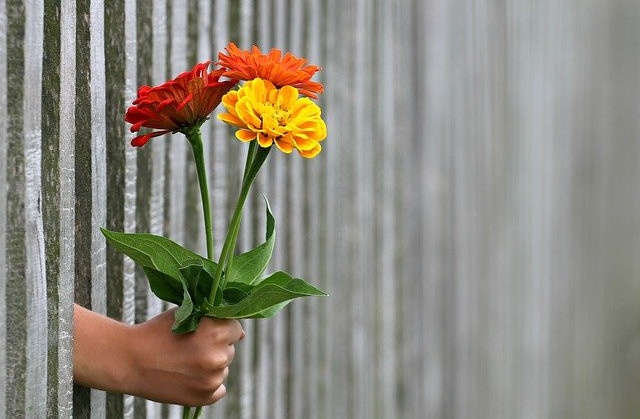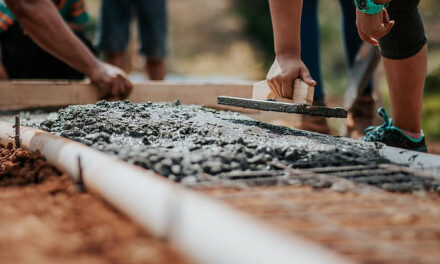Have you ever wondered why a home-owner sells his home higher than the actual valuation of that property? Or why another sells his home faster than others within the same neighborhood? Could this be luck, or is there anything one did differently to his house that makes it more appealing to potential buyers? For example, can fencing add value to a property?
Making some home improvements can help increase the chances of selling your house. There are so many properties available for sale, and for you to sell yours, you need to make some improvements to distinguish yours from others. Fencing your home is one of the best ways to increase your home’s value.
In this guide, we will be looking at how fencing will improve the value of your property.
What is a Fence?
A fence is a railing, barrier, or other structure standing upright, generally of wire, metal or wood, enclosing a particular area to control or prevent access or escape.
The Functions of a Fence
There are several reasons why you should consider adding a fence to a property, especially if it is an investment property.
Fencing your property does not only make your home more attractive, but it also serves other purposes such as;
- Security and safety
Adding a fence to your property provides the property with security. Again, fencing protects you, your family or tenants, and your valuables. There is no suburb or city on the planet without crime, so, yours will not be an exception. Taking the necessary measure to avoid being a crime victim is as simple as adding a fence around your property. A fence functions as a deterrent for intruders and trespassers, and also keeps unwanted animals away from your property.
Fencing your property does not only keep unwanted animals and intruders out but also keeps both your children and pets in. Peace of mind is so assured when you know that your kids are in a home that is fenced, especially when it has to do with their well-being. Also, a fence helps to keep pets in a well-controlled and confined area.
- Privacy
Another good function of adding a fence to your property is that it gives privacy. Fences separate your property from people outside especially from strangers who will always want to watch you and your family or even neighbors
who are snoop eyeing you, these will provide freedom from worry because your privacy is quite assured.
- Property marking
Building a fence around your investment property is the best way to mark your property line. The land is very scarce and precious, so it is imperative to mark your land even if you are having thousands of acres or just a small plot, as it helps to prevent encroachment.
Adding a fence around your property can also help you to avoid boundary disputes with your neighbors, as such disputes sometimes end in a very expensive lawsuit.
Besides, fencing your property, especially around your house will help you to know the size of the remaining space on your property, which will significantly help you to plan properly if you have any additions or renovations in mind.
Also, using a fence to mark your property will help you to know where you begin and end your maintenance activities such as gathering fallen leaves, clearing the lawn, or picking up dirt.
- Decoration
Some fences contain ornamental elements that make your property more appealing and also increase the property value. In as much as a fence has other more important functions, it can still be gorgeous and regal. Some homeowners put up a fence just for decoration. Not all fence functions as a barrier or shield, some are simply designed to look lovely.
- Trespassing weed
If your neighbor’s garden is filled with weeds, and the vegetation is trying to trespass into your property, adding a fence can help control the weeds. Although this may not work for all types of weeds, some will be controlled when their progress is impeded with a fence.
To be able to control trespassing vegetation, you need to build a fence that reaches the ground without many gaps, such as a vinyl fence.
- Protection from weather
High minds can destroy your outdoor home pieces of equipment and backyard garden when harsh weather strikes. A well-constructed fence can protect your outdoor equipment and garden by creating a protecting barrier from destructive winds.
- Resale value
A well-constructed fence with wonderful curb appeal, good privacy, and security aspects can greatly improve the value of your property and also can significantly increase the resale price.
Prospective homeowners look for properties with quality fencing because privacy and security are generally on the top lists of home buyers.
Does Adding a Fence Add Value To Your House?
Putting up a fence is among the best ways to increase your house value.
Home improvement includes installing a type of fence that promotes the security and appearance of your home. And, it’s among the things that mostly attract potential buyers to your property in the first place. Generally, buyers appreciate the security and privacy of an enclosed backyard, especially for their children and pets. This is the reason why home buyers are more interested in a property with a fence.
Though there is no guaranteed or standard formula to calculate the appraisal value of a property with a fence, fencing adds value to a house. The value a fence adds to your home depends on the material of the fence, the neighborhood, the condition of the fence, and what the buyers are looking for in that particular neibouhood.
Can a Fence Lower Property Value?
Whether a fence can add or lower property value depends on the condition of the fence. Generally, home sellers are advised to sell their properties with a fence as it adds more value to the properties. This means that a fence does not typically reduce property value, rather it increases the value. However, the quality of the fence is more important than the fence itself.
An inappropriate, cheap, or poorly painted fence will undoubtedly reduce the value of your home instead of increasing the value.
No buyer will want to buy a property with a hanging loose, broken or weirdly colored fence.
If you are considering selling your house and you do not have a good fence, I would strongly advise to revamp the fence system before proceeding to sell the house. You will certainly get a good deal, if you do so.
However, when you invest in a fence, you should remember the fundamentals of investing in property. For example, your return on investment.
I personally target for 3 times the cost of fence increment in property value, when I install anything aesthetically appealing. The fence should not be an exception.
Let’s say, your fence cost $10,000, then that should able to increase the resale value of your property by $30,000. If the resale value of the property does not increase at least twice as the cost of the fence, your investment in a fence is not worthy enough, in my opinion.
So, it’s all come to how much you invest in your fence. Focus on the lowest investment with the highest return. Not what you like!
Don’t make these fence mistakes when you build it.
To understand the fence costs better, let’s look into the types of fences and their installation costs.
Types of Fences and Their Costs
There are several fencing materials and styles to choose from, and their cost varies as well.
Generally, the cost of installing a fence can be expensive or cheap depending on many factors;
- what the fence is made from,
- style of your fence,
- how tall is it,
- how long is it,
- if the fence is set on a hill or a stony ground,
- your location,
- whether you do it yourself or you hire the services of a professional.
The cost of installing a fence is calculated per linear foot and an average home is about 150 linear feet of fencing on the property line.
- Metal and chain link
These types of fencing cost about $15-$50 for linear foot, and many people spend about $1,800-$2,550 in fencing their home.
Again, the costs depend on your fence length and height with the option of 4 foot, 6 foot, and 8-foot tall options available.
Metal and chain link fences are good for security, also, they provide better protection for pets and children, but they are not as good-looking as wood.
- Wood and privacy fence
A wood fence costs an average of $13-$19 per foot to install, with most people spending about $1,950-$2,850 to fence their home. A wood fence is the most common for the back yard (especially in the USA) and it can last up to 20 years.
The installation cost of a wood fence depends on the types of wood you choose with the most common being redwood, cedar, and pine.
Cedar is among the best fencing wood because it has oil within that naturally resists insect damage, decay, and moisture. Using cheap wood for fencing may need yearly maintenance to keep it from insect damage and moisture.
- Vinyl fence
Installing a new vinyl fence cost about $15-$30 per linear foot. Most homeowners spend about $2,800-$5,500 to fence a typical home depending on the height and size.
Vinyl has many colors and styles to choose from, and the most common is a faux wood look or a white vinyl.
Vinyl does not rot, split or warp, and are free from the corrosion and rust problems that are common with metal fences.
- Composite and Trex fencing
Composite and Trex fencing cost up to $23-$37 per linear foot to install, and many people spend about $3,450-$5,550 to fence a typical home.
This type of fence can last up to 20 years and looks like a wood fence but does not need sanding, staining, or painting.
- Wire fence
Installing a wire fence cost about $1-$7 per linear foot or about $1,254-$5,852 for acre according to the type of wire. Ordinary wire fence includes hog wire, woven wire, and barbed wire, installing each cost about $2 per linear foot.
- Aluminum fence
Installing an aluminum fence will cost about $24-$50 per foot depending on the height. Most people spend about $3,600-$4,800 to fence a typical home with aluminum panels.
Aluminum fencing is very economical, and it comes in a variety of privacy or picket styles. It is available in several colors to uniquely match your current curb appeal and landscaping.
- Board on board fence
To install a board on board or shadowbox fence will cost about $16-$22 per foot, and fencing a typical home can cost between $2,400 -$3,300 for both materials and installation.
This kind of fence is good for the backyard because both sides look the same. It is an attractive and good look fence solution.
- Wrought iron fence
To install a wrought iron fence will cost about $24- $44 per linear foot while fencing an average home can cost between $3,600- $6,600. This type of fence is very classy and lasts for a longer period.
Wrought iron fences do not decay or rot and it resists insect damage.
However, it may not be an easy job to install a rough iron fence because it is too heavy and needs professional hands and a huge amount of money to do the work.
- Security fence
A security fence is generally constructed from iron, steel, chain link, wire mesh, or metal combination.
To install this type of fence cost about $30-$60 per linear foot. To fence, an average home cost about $4,500-$9,000. The major purpose of a security fence is to keep people out.
Most security fences are 8 feet tall with pointed edges and spires. This fence has a much-secured gate system. The security fence is highly secure for life and property protection.
- Brick, concrete block, or stone fence
This fence cost about $6-$20 per square foot and $3,600-$12,000 for a typical home. This type of fence is constructed by professional masons. These walls are strong, attractive, and generally priced by the square foot.
|
Type of Fence Material |
Cost for Linear Foot |
Cost for Average Fence |
Cost Comparison |
|
Metal and Chain Link |
$15-$50 |
$1,800-$2,550 |
$$ |
|
Wooden Privacy |
$13-$19 |
$1,950-$2,850 |
$$ |
|
Vinyl |
$15-$30 |
$2,800-$5,500 |
$$ |
|
Composite and Trex |
$23-$37 |
$3,450-$5,550 |
$$$ |
|
Wire |
$1-$7 |
$500-$2,000 |
$ |
|
Aluminum or colourbond |
$24-$50 |
$3,600-$4,800 |
$$$ |
|
Board on Board or Shadowbox |
$16-$22 |
$2,400-$3,300 |
$$ |
|
Wrought iron |
$24- $44 |
$3,600- $6,600 |
$$$$ |
|
Security fence |
$30-$60 |
$4,500-$9,000 |
$$$$$ |
|
Brick, Concrete Block or Stone |
$6-$20 |
$3,600-$12,000 |
$$$ |
Tip: Too costly? This how to raise capital for your investments.
What is the Most Affordable Fencing Options?
There are so many inexpensive fence installation techniques that use scavenged, recycled, or locally sourced materials.
Some of these fencing options are aged and fairly forgotten, but it shows that if there is an abundance of some materials in your area, such as wood, brush, or stones, you can construct a beautiful and strong fence too.
- Simple pallet fence
The pallet fence is very easy and quick to install. It is a very affordable option that takes only a few hours to install. Though this fencing option is very cheap, it is a good-looking and strong fence, also adding paint will make it more beautiful.
- Split rail fence
This type of fence is an ancient fencing option but still popular to this day. The original design needs no special hardware or tools, only plenty of rot-resistant woods. This fencing option is not expensive and it’s easy to install.
- Brush fence
This fencing option is built by neatly pilling cleared brushwood made up of twiggy vegetation or small trees until it becomes a structure some feet wide and tall. Brush fences are practical impenetrable when completed because of the thickness of the twigs. This type of fence is affordable and easy to install too.
- Hedging fence
Hedges are ecologically valuable and aesthetically pleasing. They are a living fence that works as a windbreak and create privacy.
Common hedging plants include prickly ash, hawthorn, barberry, holly, hemlock, yew, boxwood, privet, and honey locust.
Before planting, there is a need that you check which hedge plants grow well in your area. Some people buy the young plants from the nursery, but many hedging plant types can be propagated from cuttings. You can save some money by growing hedging fence if you have the patience and have time.
- Dry stone wall
This is another old way of building retaining or standalone walls from stones of different sizes. It does not require any mortar to hold them together. Gotten from the quarry or field, flatter and larger stones are placed carefully in an interlocking style while smaller ones are used to fill the gaps between.
The dry stone wall requires enough strength to build, but it does not cost much because the materials are sourced locally. It is durable and incredibly strong when completed.
Here are some beautiful fencing ideas.
Tip: Are you building a driveway, a fence and a gate? Then make sure to build them in the correct order.
Conclusion
When it comes to adding value to a property, installing a fence that does not correspond to the design and style of the house could be worse than not having a fence at all. For instance, an odd Victorian home will look weird if you install a high stockade fence while a modern, sleek home will look out of place if you add a brush fence. So, to add value to your property, ensure your fence matches the look of your house and the status of the neibouhood.
After all, as a real estate investor, your decision should be guided by return on investment as I explained above.





